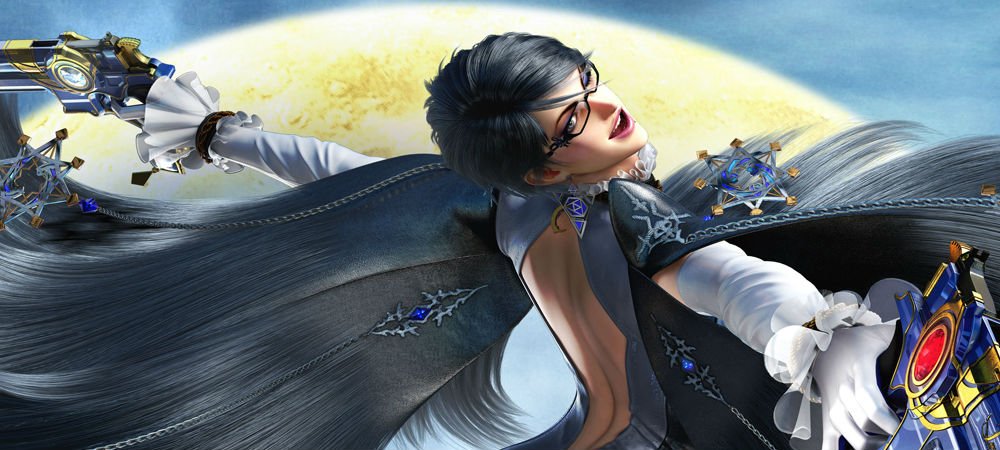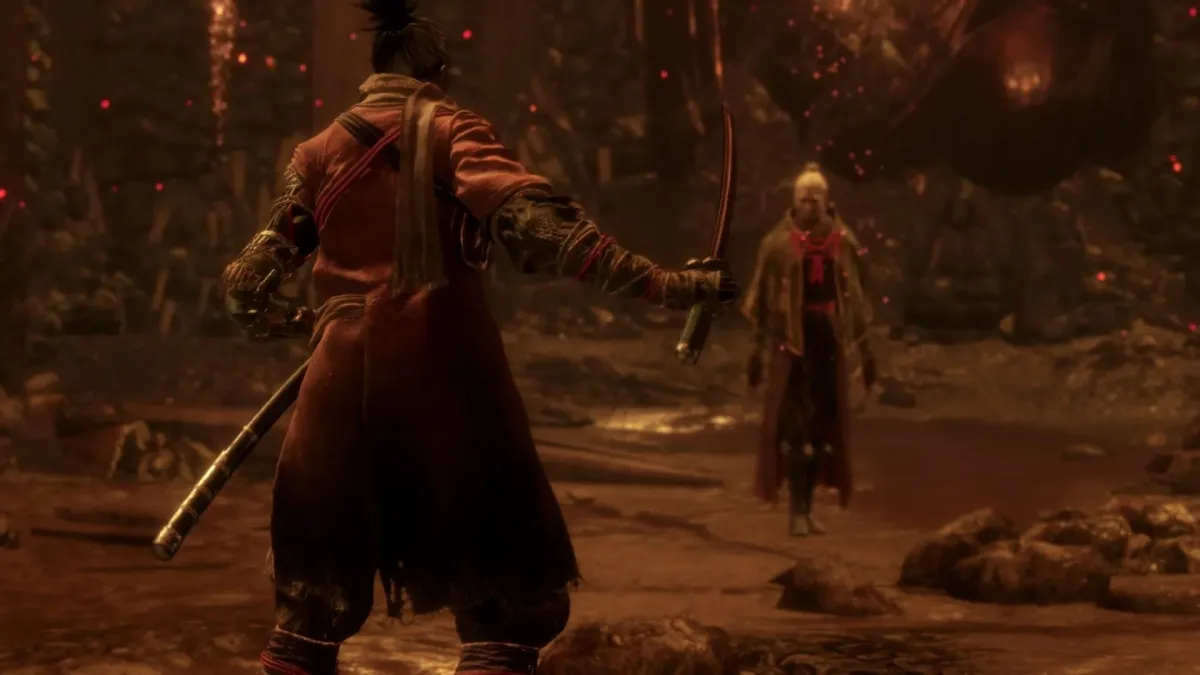I’ve got a fever, and the only cure is more dead angels
Outside of Devil May Cry 3, Bayonetta is one of the finest action games of all time. The action systems were so clean, so precise, and so rewarding that it leaves pretty much everything these days in the dust.
Bayonetta 2 doesn’t change a whole lot, and that’s perfectly okay with me.

Bayonetta 2 (Wii U)
Developer: Platinum Games
Publisher: Nintendo
Released: October 24, 2014
MSRP: $59.99 (with Bayonetta 1)
Bayonetta‘s simple and elegant technical action system returns in the sequel. On the surface, it’s a two-button “punch-kick” system that also allows weapon switching and a ranged attack option. The beauty of the system is that it’s very easy to learn, and on lower difficulties, it’s viable to get by (albeit earning lower scores) with only picking up a few combos.
But once you truly dig in to the tougher challenges, you’ll have to master a large number of the game’s combos to survive. Moves like the three-kick launcher, followed by an aerial rave, or the four-punch-kick flurry stun. While two buttons doesn’t seem like much, the addition of delays and traditional fighting game moves expands the combo system to a whole new level. There’s even air combos, and analog stick spin moves.
The sequel once again uses concepts pioneered in Devil May Cry 3 like projectile juggling and instant weapon switching mid-combo to allow for a near endless amount of options in how you choose to approach any situation. If this sounds intimidating, don’t worry — the game teaches you everything fairly well. There’s even a loading screen to practice on, with a combo list readily available to freshen up. It also tells you how many times you’ve used each move, in case you need an indicator of how to mix things up.
Dodging is as essential as ever, triggering a “Witch Time” slowdown effect if performed right before a blow is about to be struck. One of my favorite things about Bayonetta is that it doesn’t have those goofy “DODGE NOW!” icons above all of the enemies’ heads that initiates an instant counter. You’ll have genuinely need to pay attention to the battle at hand, learn the telegraphs (if there are any), and dodge on your own.
Stylish torture attacks return (which are tag-team attacks with a partner), as do the big finale beast finishers and a lot of the classic abilities that made the first game so great. There’s nothing better in gaming out right now than initiating a knockback move followed by a sprinting panther rushdown attack, then a juggle combo while triggering Witch Time after a quick dodge.
It not only plays great, but there’s so much style involved in just about every animation. Dashing turns you into a panther, double-jumping allows you to sprout butterfly wings, hovering turns you into a crow. Everything from the snapshot “photo finish” effect of completing a challenge room is painstakingly detailed.

Control-wise, Bayonetta 2 exemplifies everything I love about the Wii U as a piece of hardware — options. There’s setups for the GamePad, touch controls, and the Pro Controller. There’s four configurations of inputs in all, and Off-TV play is always on. I didn’t think I’d be able to perform with precision using the GamePad as a controller back when the game was announced, but I’m loving it. That said, I wouldn’t recommend touch controls outside of the novelty.
In terms of the story, it’s just as cheesy as ever, with characters like the Joe Pesci look-alike Enzo returning in a bigger way. To give you an example, Enzo’s penis almost gets grinded up by Jeanne’s motorcycle about ten minutes in, and Rodin, dressed as Santa Claus, drives a car on the side of a building. Oh, and Bayonneta kicks a fighter jet flying at full speed with a Sunday dress on. The choreography looks like it was taken straight out of an over-the-top action movie, and it’s all the better for it.
Bayonetta 2 doesn’t linger whenever a new concept is introduced, which is a pretty big accomplishment since it’s running on all cylinders throughout. Whether it’s flying through the air in a special boss fight or piloting a mech, the game keeps you interested throughout its 12 chapters without re-using mechanics over and over. The level design is still reminiscent of Devil May Cry or God Hand in that its semi-open, allowing for a good deal of exploration and hidden treasures. There’s also more underwater parts this time around — don’t worry, they’re good.

It’s clear to see that the series has gotten an upgrade visually on the Wii U, and the frame rate is very clean — I had no issues with my playthrough. As I said earlier detail is the name of the game here, as a lot of enemies have organic armor that can rip off bit by bit as you’re slashing away. Bayonetta’s new look is also perfect, in the sense that it’s familiar but also different enough to divorce itself from the original. As an added bonus you can also switch on Japanese audio if you’re into that, and the jazzy soundtrack is even better than the first game’s offering (Bayonetta 2‘s take on Moon River is among my favorite tracks).
The biggest addition is probably the “Tag Climax,” which is a two-player mode that allows people to work in tandem while challenging each other to earn the highest score. You can bet “Halos” (the game’s currency, which is linked to your campaign file) on whether or not you’ll earn the highest amount of points, which also jacks up the difficulty. Bayonneta 2 allows you to select from a specific mission pool (called “Verse Cards”) as well as from a pool of multiple characters and costumes.
My favorite part of Tag Climax — it has a CPU bot option! While many games completely forgo this mechanic that was once commonplace, Bayonneta 2 allows you to enjoy the mode even if none of your friends are online or you can’t find anyone in the matchmaking system. This feature will come in handy years down the line when the online mode is dead and you still have the itch to play it.

Like the first game, there’s also tons of extra content that’s available right on the disc with no DLC needed. There’s new difficulties, verse cards, characters, a crafting system, Miiverse functionality, and stamps. There’s also single-player challenge rooms in the realm of Muspelheim, which are similar to Onimusha‘s dark realm. These are no joke, with modifiers like “only Witch Time attacks do damage” or “complete the challenge without getting hit.”
To make it even tougher, you don’t have a life bar in general — you have a “hit meter” that decreases as you take even one bit of damage. The good news is that you can retry these as many times as you like until you best them. Oh, and there’s also time trial races for extra chests, story fragments to find, and Rodin’s shop is back for you to spend all your Halos in. It sports items, consumables, accessories, weapons, and moves to buy. You can even try out the moves beforehand. Unlike the first game, you can also opt for hard mode right out of the gate. Platinum basically thought of everything.
Although this review doesn’t take the bonus free copy of Bayonetta 1 into account, anyone would agree that it’s a massive incentive to take the plunge. The first game still holds up to this day, and with a consistent frame rate and a ton of extra costumes, it’s definitely worth playing whether you’ve already completed it or are experiencing it for the very first time.

When Bayonetta came out in 2010, I thought it was nearly perfect. Four years later and Platinum hasn’t lost its edge with Bayonetta 2. It’s just as stylish and as fun as ever, and a must-buy for action fans who own a Wii U.










Published: Oct 24, 2014 01:30 pm